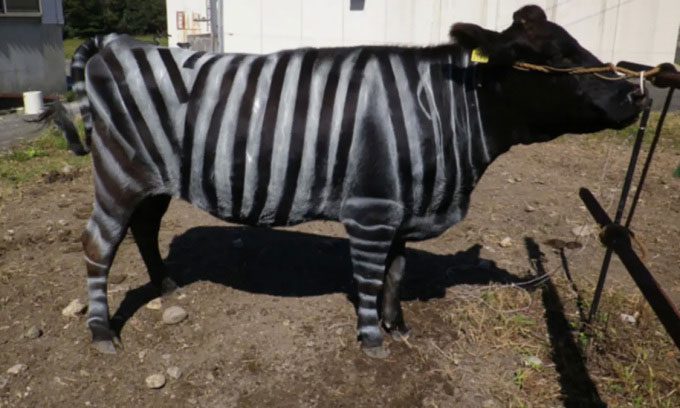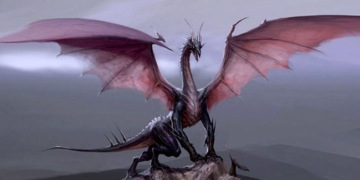Black cattle with white stripes exhibit fewer behaviors such as stamping, tail flicking, or head shaking to ward off flies compared to their peers.
Farmers in Yamagata Prefecture, Japan, have begun painting their black cattle with zebra-like stripes to repel blood-sucking insects, according to a report by Interesting Engineering on March 18. This experiment is showing promising results, as the painted cattle show fewer signs of stress than their unpainted counterparts.

Zebra-striped cattle in Japan. (Photo: PLOS One).
Japanese Black cattle are one of four breeds utilized for high-quality wagyu beef in Japan. However, they are suffering from disturbances caused by blood-sucking insects such as horn flies and stable flies. The stress from these insects is significant enough that some farmers have reported a decrease in the reproductive rates of their herds.
To address this issue, farmers in Yamagata have been using spray paint or mild bleach to add white stripes to their black cattle, making them resemble zebras. This effort has been ongoing for over three years. After observing improvements in the condition of their herds, more farmers are adopting this cost-effective method.
Local scientists are observing both painted and unpainted cattle in agricultural fields and noting behaviors such as tail flicking, head shaking, or stamping to chase away flies. While unpainted cattle exhibit these behaviors up to 16 times per minute, the painted cattle only do so 5 times.
Local scientists have not yet shared specific details on why flies seem to avoid striped surfaces. In 2019, a group of experts from the Aichi Agricultural Research Center in Nagakute, Aichi Prefecture, Japan, conducted a study involving six cattle and published their findings in the journal PLOS One. The research indicated that zebra-striped cattle could avoid attacks from blood-sucking flies, although no experiments were conducted to determine the specific reasons for this behavior.
Farmers typically rely on insecticides to tackle this problem. However, insects tend to develop resistance to these chemicals within about a decade, leading to a demand for new and more potent solutions. Painting stripes serves as a short-term, cost-effective alternative. This solution can evolve from using external marking paint for identifying livestock.
Furthermore, previous research has shown that painting stripes on livestock causes light polarization. This phenomenon makes it difficult for insects to detect movement, preventing them from slowing down in order to land on the animals. Therefore, this method is effective in preventing insect bites.


















































